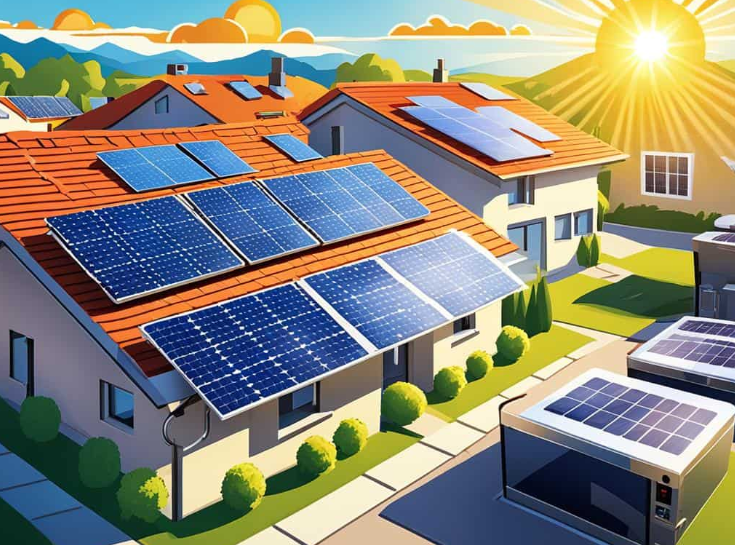
Building Integrated Photovoltaics Advancing Sustainable Architecture and Energy Efficiency
Building integrated photovoltaics (BIPV) are solar energy systems that are seamlessly incorporated into a building’s structure, such as roofs, windows, or façades. BIPV not only generates electricity but also replaces conventional building materials, serving both functional and architectural purposes. This integration makes solar technology a natural part of the building rather than an add-on.
Unlike traditional solar panels mounted on rooftops, BIPV systems are designed to blend with the building envelope, enhancing aesthetics and optimizing space use. This approach can reduce material costs and contribute to energy-efficient, sustainable building design.
Understanding Building Integrated Photovoltaics
Building integrated photovoltaics combine solar energy generation with essential building components, creating functional surfaces that produce electricity. This approach modifies conventional construction elements like roofs, facades, and windows, embedding solar technology directly into the building’s envelope.
Definition and Core Concepts
Building integrated photovoltaics (BIPV) are photovoltaic materials built into a building’s structure rather than mounted separately. They replace conventional building materials such as roof tiles, curtain walls, or glass window panes.
These systems convert sunlight into electrical energy while maintaining the building’s weatherproofing, insulation, and aesthetic functions. Unlike traditional solar panels, BIPV forms an integral part of the envelope, making them both an energy source and a structural element.
BIPV modules are designed to blend seamlessly, offering flexibility in size, shape, and transparency. They can include opaque, translucent, or semi-transparent photovoltaic materials, depending on architectural needs and energy goals.
Types of Building Integrated Photovoltaics Applications
Common BIPV applications integrate solar cells in:
- Roofs: Shingles or tiles with embedded PV cells replace standard roofing materials.
- Façades: Solar modules integrated into walls serve as cladding or shading devices.
- Windows and Skylights: Semi-transparent PV glass produces power while allowing natural light inside.
BIPV systems also have bifacial options, capturing sunlight on both sides to maximize energy generation.
Each application varies in installation complexity, energy output, and impact on building design. For example, PV windows provide daylight while generating less electricity than roof-mounted panels.
Benefits of Architectural Integration
BIPV reduces building material costs by substituting conventional components with solar modules, offsetting initial installation expenses. Integrating PV into the structure minimizes the need for separate mounting hardware and labor.
The technology enhances building aesthetics by allowing sleek, customizable designs without bulky panels. It supports sustainable architecture through onsite renewable energy generation, reducing dependence on external power sources.
BIPV contributes to improved energy efficiency and potential building certification credits. Additionally, it increases property value by combining energy production with essential building functions, making it a practical investment for developers and owners.
See also: Buy Copper Stock: Smart Strategies for Long-Term Investment Success
Design and Implementation of Building Integrated Photovoltaics
The successful design and implementation of Building Integrated Photovoltaics (BIPV) require careful selection of system components, thoughtful integration with building structures, strategies to boost energy output, and adherence to aesthetic and regulatory demands. Each aspect directly influences the system’s efficiency, durability, and visual impact.
System Components and Materials
BIPV systems are composed primarily of photovoltaic modules designed to serve both as solar energy collectors and parts of the building envelope. Common materials include crystalline silicon, thin-film, and emerging perovskite solar cells, each offering different efficiencies and flexibility.
Supporting components include mounting structures, electrical wiring, inverters, and sometimes energy storage units. These components must withstand environmental factors like wind, rain, and temperature changes to ensure long-term performance.
Material choice affects durability, weight, and cost. High-transparency materials are often used for window-integrated BIPV to allow light passage without sacrificing power generation.
Integration with Building Envelopes
BIPV integrates solar modules directly into building elements such as roofs, façades, and windows. This dual function reduces material use by replacing traditional cladding or roofing with photovoltaic panels.
Seamless integration demands compatibility with building design, structural loads, and weatherproofing requirements. Proper sealing and thermal management are essential to prevent moisture ingress and overheating.
Standardized modular components facilitate easier integration and replacement. Design coordination between architects and engineers ensures that BIPV complements both structural and aesthetic objectives.
Performance Optimization Strategies
Optimizing BIPV performance involves orienting photovoltaic surfaces for maximum sun exposure and minimizing shading effects from surrounding architecture or trees.
Thermal management techniques like ventilation channels or heat sinks improve efficiency by preventing overheating. Implementing tracking systems is limited but possible in some façade applications.
Electrical design must focus on minimizing losses via optimized wiring layouts and high-quality inverters. Monitoring systems track energy production to detect performance drops early.
Regular maintenance schedules prevent dirt accumulation and degradation, preserving output levels over time.
Aesthetic and Regulatory Considerations
Aesthetics heavily influence BIPV adoption, as solar modules become visible architectural elements. Customizable colors, shapes, and translucency options help align BIPV with building styles.
Compliance with local building codes and solar energy regulations is mandatory. These rules govern installation methods, electrical safety, fire resistance, and sometimes energy rating requirements.
Obtaining necessary permits can involve multiple agencies, requiring detailed documentation of design, materials, and expected performance.
Architects balance regulatory constraints with creative design to ensure BIPV systems fulfill both functional and visual goals.



